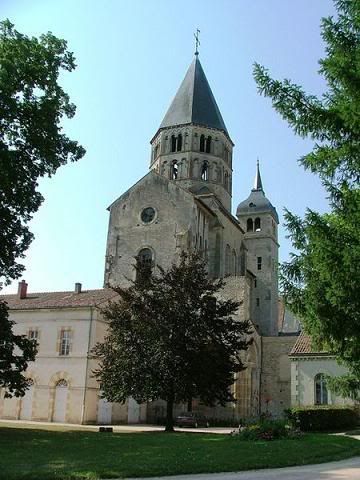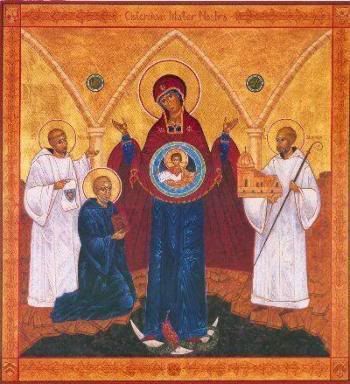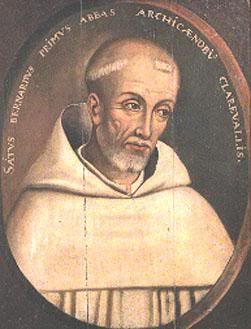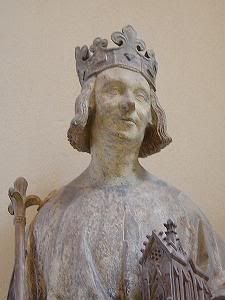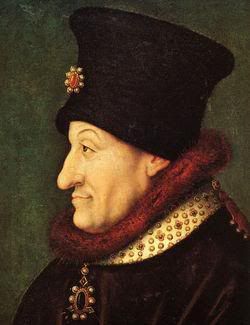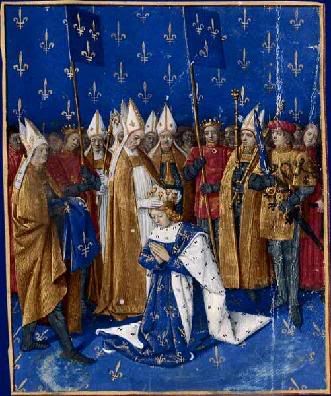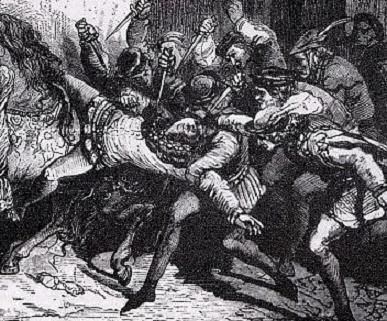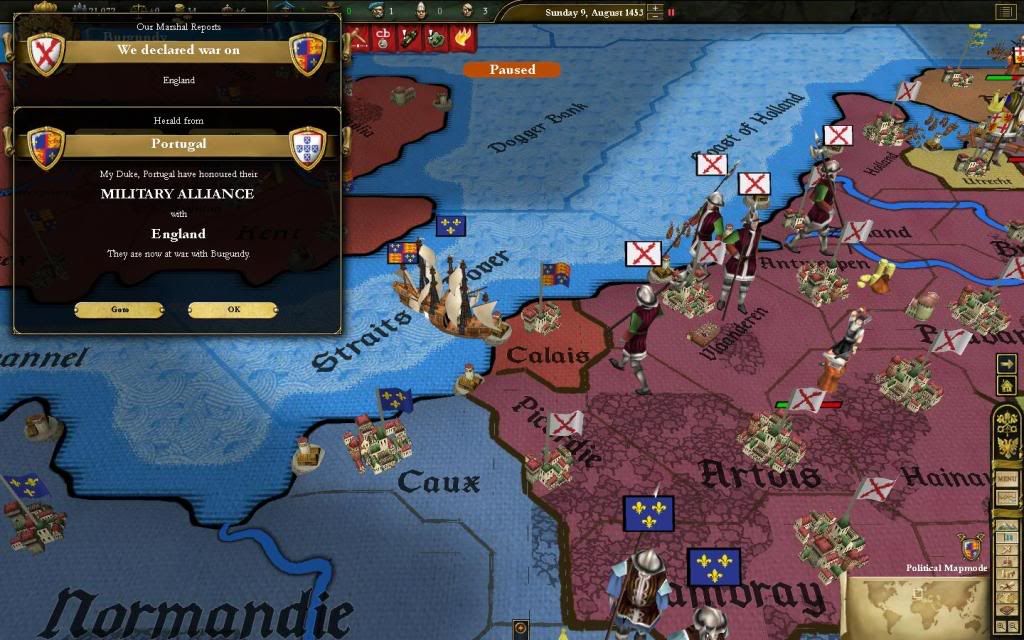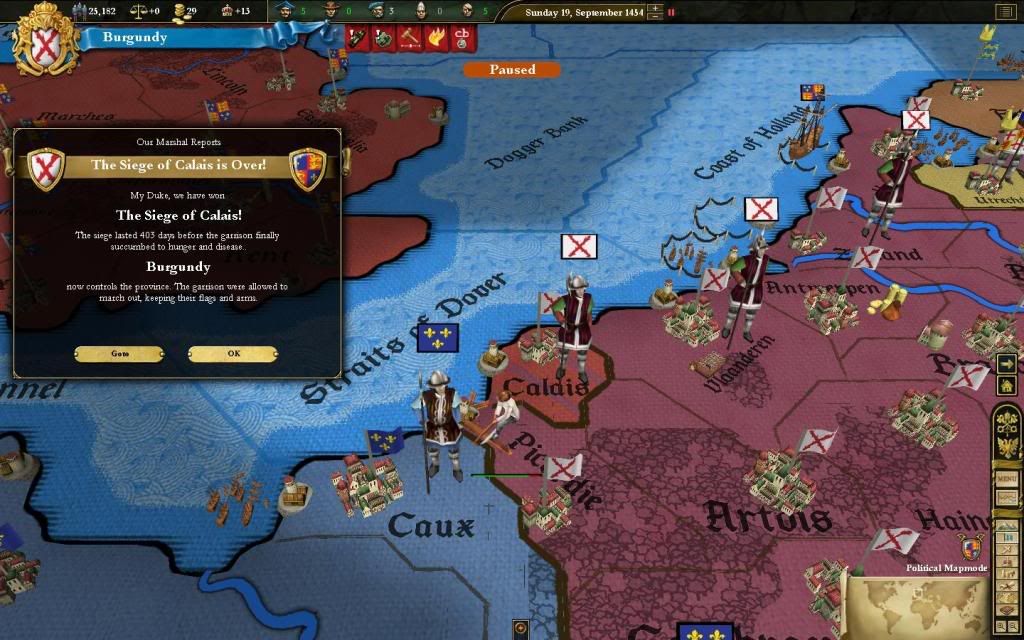A Dream Deferred: Medieval Burgundy
A brief note on nomenclature: To avoid confusion, we will be using the term "Kingdom of Burgundy" only to refer to the modern kingdom created in 1480, not any of the earlier incarnations.
Middle Francia and Lotharingia
The Burgundians were no more, but they continued to give a name to the land in which they had settled. They also left behind the idée fixe of a Middle Kingdom between France and Germany, which persisted for centuries despite the repeated failure of any attempt to realize it.
We can pass quickly over the Merovingian period and the time of Charlemagne and rejoin history in the mid-ninth century. Following the Treaty of Verdun (843), Lothair I, grandson of Charlemagne and son of Louis the Pious, ruled a great realm known as Middle Francia, stretching from the North Sea to Lombardy. To his second son, also named Lothair, he bequeathed (in 855) a kingdom close to what is now known as Burgundy Proper; this kingdom was known as Lotharingia (from the Latin Lotharii Regnum, the Kingdom of Lothair), a term which survives in the modern "Lorraine." Attempts to revive such a kingdom were a recurring feature in the early middle ages, but all proved short-lived.
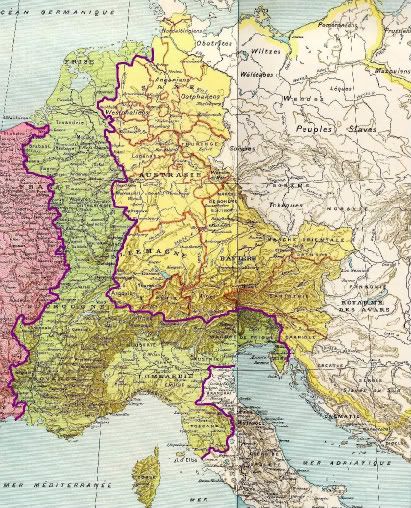
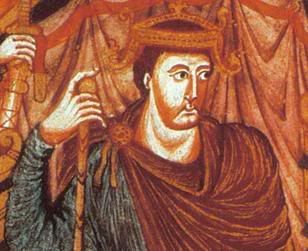
Left: Middle Francia following the Treaty of Verdun, along with East Francia and part of West Francia, with borders highlighted in purple. Right: Lothair I, who ruled over the middle kingdom, including modern-day Burgundy
Division
Following this period, what we now call the Kingdom of Burgundy was divided into a number of entities:Lower Burgundy was located in what is now Southeast France, including Lyons, Marseilles, Nice, and Avignon. Of this area, only Lyons was ever part of the Kingdom of Burgundy, and that only from 1662-1829.
Upper Burgundy included what became known as Switzerland, as well as the Franche-Comté and its most important city, Besançon.
Both Upper and Lower Burgundy were part of the Holy Roman Empire. The majority of modern-day Burgundy Proper, including Dijon and Nevers, remained part of the French Kingdom, and will be discussed in greater detail below.
Upper Lorraine was the name of what become the modern-day Burgundian province of Lorraine, including Nancy, Metz, and Verdun – some of Burgundy's richest territory, and the ancestral homeland of the Royal House which has reigned over the country since 1698.
Lower Lorraine was the term for the Low Countries, some of which remains part of the Kingdom today, and some of which is now part of the Republic of the Netherlands. Some small areas in the former Lower Lorraine are also now parts of France or Germany.
The County of Burgundy
What we know of today as Burgundy Proper once consisted of two sections: the Duchy of Burgundy in the west and the County of Burgundy (or the Franche-Comté) to the east. For a time, the county was the last real remnant of the older kingdoms; the duchy is a later creation, which we will discuss shortly. Unlike the duchy, the county was considered a part of the Holy Roman Empire. A number of powerful women ruled over the county during its history. The countess Beatrice I married Emperor Frederick Barbarossa in 1156, and upon her death, Frederick administered it as part of his personal demesne. However, the House of Ivrea held the county for most of the period between 1000 and 1350. The various struggles over control of the province between its counts and the emperors led to the unique title of Free Count, and the county itself became known by its "nickname," the Free County, or the Franche-Comté.
A union between the Free County of Burgundy and the Duchy of Burgundy was attempted a number of times before it succeeded, as we will see in our longer study on the history of the duchy. Ultimately, the legal distinction between the two was abolished in 1513 by a decree of St. Philip, which united the two territories and definitively removed the former Free County from the Emperor's jurisdiction. However, the name Franche-Comté remains to this day.

As part of the struggle between Burgundy and the Empire, the "Two Burgundies" were united under St. Philip.
The Duchy of Burgundy
The Bosonid Dynasty
It could be said that the story of Burgundy as we know it today begins with Richard the Justiciar (d. 921), younger brother of Boso of Provence (whom he defeated in battle at Vienne, fighting for Charles the Bald) and the first man to be given the title dux Burgundiae (c. 918), after gaining control of the majority of the French region. Richard proved a capable ruler, and his reign was a time of relative prosperity and stability for Burgundy.
Richard's son and heir Rudolf rose to the throne of Western Francia shortly after the former's death. Rudolf was succeeded as Duke by his brother Hugh the Black (r. 923-952), then by his brother-in-law Gilbert (r. 952-956). In this later period, the old prosperity gave way to war with the neighboring Robertian Dynasty, ancestors of the Capetians.
The Robertian Dynasty and the First Succession Crisis
Gilbert was forced to do homage to Hugh the Great, Count of Paris, whose son Otto married Gilbert's daughter and became the first Duke (r. 956-965) of the Robertian line. When Otto expired, he was succeeded by his brother, Otto Henry (r. 965-1002), commonly called the Great or the Venerable, who came out of his life in the Church to take up statecraft. He married twice but, like his elder brother, left behind no legitimate issue when he died.Thus at the dawn of the second Christian millennium, two men claimed lordship over the duchy. The first was Otto Henry's stepson by his marriage to Gerbega of Macon, Otto William (962-1026), who held the County of Burgundy as a vassal to the Emperor. He was the son of Gerbega and Adalbert II, King of Italy. The other was Henry's nephew King Robert II (the Pious) of France (972-1031), who claimed the duchy by proximity of blood and by his rights as Otto Henry's lord.
A long war broke out between the two. Though the riches of Burgundy were important enough, the conflict can also be seen as a chapter in the great struggle between France and the German Empire. Had Otto William won the contest, the two Burgundies would have been united as a fief of the Holy Roman Empire, a devastating blow to the French kings, and history would have certainly proceeded differently. But this did not happen; Robert emerged the victor, and the duchy remained within the French sphere of influence for several more centuries.
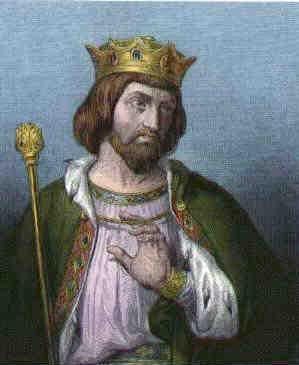
King Robert II of France, who won the struggle for Burgundy.
Under the Capetian Kings
King Robert, unable to administer war-torn Burgundy effectively, gave the duchy to his son Henry (1008-1060) in 1016. Upon Robert's death in 1031 Henry became Henry I of France. Henry was not a strong ruler, however, and was compelled to ensure the loyalty of his brother Robert (1011-1076) by bestowing Burgundy to him in 1032. Thus did Duke Robert I, sometimes known as Robert the Old, found the House of Burgundy.
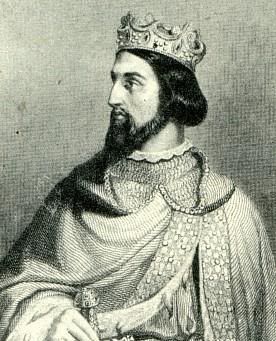
Before becoming King Henry I of France, Henry Capet was Duke Henry I of Burgundy. Nearly seven centuries after Henry I's death, a new king of Burgundy was crowned Henry II.
The House of Burgundy
Robert I was neither a capable nor a moral man, and exercised what little power he had by plundering the remaining wealth of the duchy. He died unlamented in 1076. Robert's eldest son Henry had died in 1071. Burgundy passed first to Henry's eldest son, Hugh I (r. 1076-1079), who soon abdicated, fought in Iberia against the Moors, and finally returned to take monastic vows. His brother Odo I (the Red) took his place, ruling until 1103 and distinguishing himself only by attempting to rob Saint Anselm and by establishing a stable line of succession. 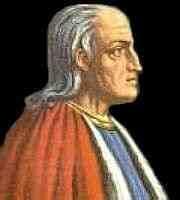
During his conflict with the English King Henry I, St. Anselm of Canterbury was travelling through Burgundy on his way to Rome when Duke Odo the Red and his men attempted to rob him. Odo was overcome by Anselm's piety, however, and did not take anything from him.

Afonso Henriques, the first King of Portugal, was the son of Odo the Red's youngest brother, Henry, who left Burgundy for Iberia and eventually became Count of Portugal.
Odo the Red's descendents ruled over Burgundy for many years. Among the more notable rulers of this dynasty we may count Hugh III (r. 1162-1192), enemy of Philip Augustus (against whom he instigated a disastrous rebellion) but trusted friend of Richard the Lionheart (alongside whom he fought against Saladin). It was Hugh who first moved the ducal court to Dijon. He died in Acre.
Hugh's son Odo III (r. 1192-1218) was a loyal servant to King Philip, fighting against the Emperor and the English, and organizing a Crusade against the Cathar heretics.
Robert II (r. 1271-1306), fearful at the fragmentation of the ducal demesne, instituted a policy of strict primogeniture inheritance, thus keeping the duchy intact and the dukes powerful.
The Free County and the Duchy were united under Odo IV (r. 1315-1350), through his marriage to Countess Joan III. This victory proved to be but momentary.
Upon his death, his three-year-old grandson Philip became Duke Philip I (the boy's father, Philip of Auvergne, had died four years previously when a horse kicked in his skull). All of his family's dreams seemed to be realized in the promising young duke. Through his grandmother he had inherited the Free County and Artois; from his mother, Auvergne. He was, furthermore, betrothed to Margaret of Dampierre, and upon their marriage he would come into the lordship of Nevers and great tracts of the low countries. In fine, he would have grown to become one of the most powerful men in Europe. But he was cut down by the plague in 1361 at the age of fifteen; his widow went home to Flanders, not knowing that she would one day return to Burgundy, and his various possessions passed into the hands of different owners once more. Thus ended the Burgundian dynasty, which had ruled over Burgundy for more than three centuries.

Margeret of Dampierre, or Countess Margaret III of Flanders, who played a crucial role in Burgundian history in the fourteenth century and helped established the borders of Burgundy that we know today.
The Second Succession Crisis and the Birth of Valois Burgundy
Once more, two pretenders claimed the right to rule Burgundy. And once more, one was the King of France – this time John II (1319-1363). The other was Charles II, King of Navarre (1332-1387). The latter was the great-grandson of Duke Robert II through his eldest daughter; the former was grandson through his youngest. Both men had equally good claims.The matter was resolved through political, not legal, reasoning. The kingdom was now mired in the Hundred Years' War, and the lesser nobility of Burgundy were in this period still by and large loyal to the French cause. Charles, however, was an ally of England. Thus, the nobles nearly all found reasons to support John's claim. Charles, with so little support, was forced to put away his ambition. King John II of France now also became Duke John of Burgundy.
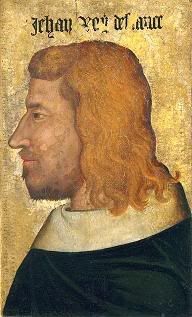
John II of France, whose eventful life included winning the title of Duke of Burgundy and establishing Valois rule over the duchy. Incidentally, he is also known as "John the Good" – the first Duke of Burgundy to have an epithet, which over time has became a unique convention of all the Burgundian monarchs.
Conclusion
John would eventually give Burgundy to his youngest son, Philip the Bold, creating a cadet branch of the Valois dynasty that would revive the dream of an independent kingdom. We will tell that story another day.Before we do, however, we will take a look at one more aspect of medieval Burgundy. This section has gone on long enough, so our next chapter will serve as a (much smaller) addendum to this one. There we will cover the great monastic revival that swept across Burgundy in the tenth and eleventh centuries, and consider its impact on later events and even the present day.
Last edited:



